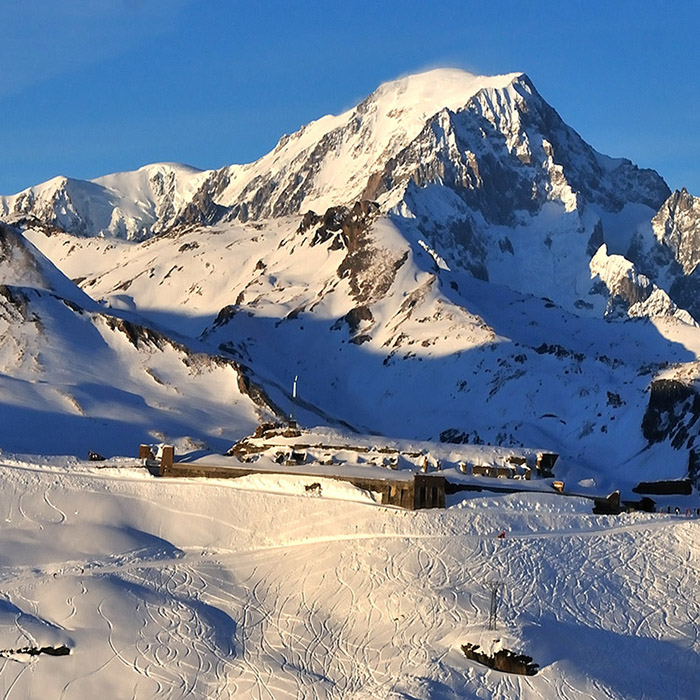
Culture and Heritage
Going to the petit Saint Bernard pass means going back in time to the oldest ages, to discover that men frequented these places and left traces of their passage from pre-history to the present day.
Tourist reception, info point and museum area
The Info Point and the permanent exhibition are open every day.
Open from June 15 to September 20.
Bilingual French and Italian welcome.
Horaires
June and September
10h30 - 16h30
July and August
10h - 18h
The Roman road
Begun under Julius Caesar around 45 BC and completed around 2-3 AD, the great Roman road linking Milan to Vienna and the Col was its highlight. It takes over from the old prehistoric trail and is a masterpiece of Roman architecture in the Aosta Valley. This route runs in a straight line on the plateau and its layout is difficult to spot, its width is approximately 4m50. On the Italian side, the current road intersects it in many places, on the French side it descends on the right bank of the torrent of the recluse and joins the hamlet of St Germain.
This means of communication stimulates trade exchanges and contributes through local spin-offs to the economic development of ancient Ceutronia.
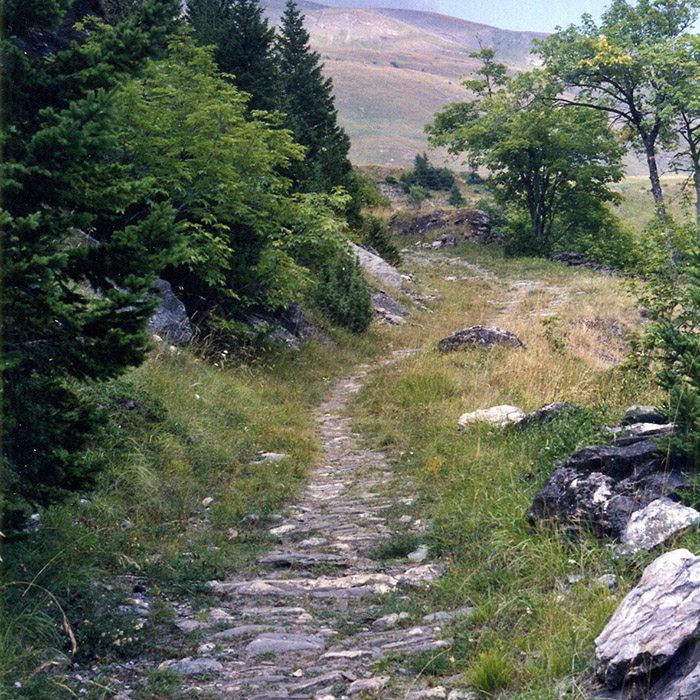
The Cromlech
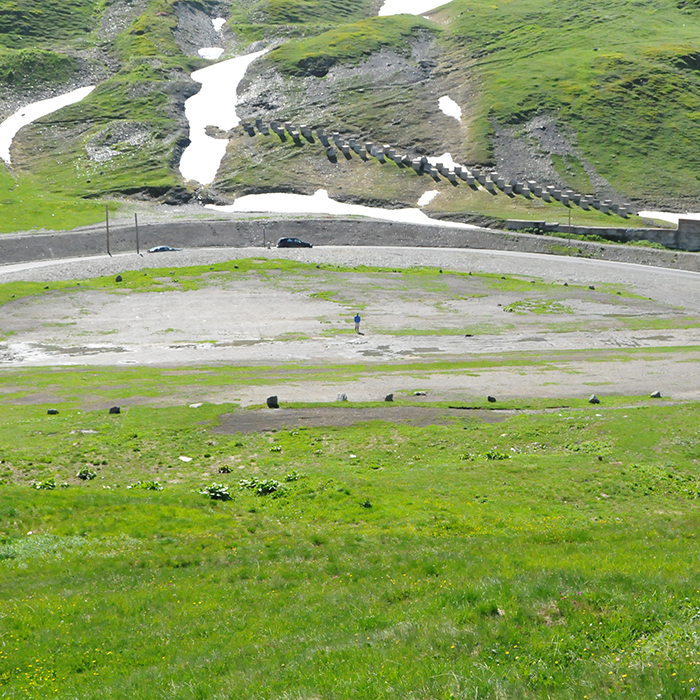
In the middle of the plateau straddling the border, the “Cromlech”, a large alignment of stones which forms a large circle 70 m in diameter challenges passers-by. Complete, it was to consist of 63 blocks of stone 1m to 1m20 high. Today, only 8 of the 46 stones in place appear authentic. This circle indicates the presence of men with collars in the pre-Roman era.
It is difficult to decide on the destination given to this monument built just at the level of the watershed, built in an isolated place: meeting of the Salas and Ceutron peoples? worship and tombs?
Statue of St. Bernard
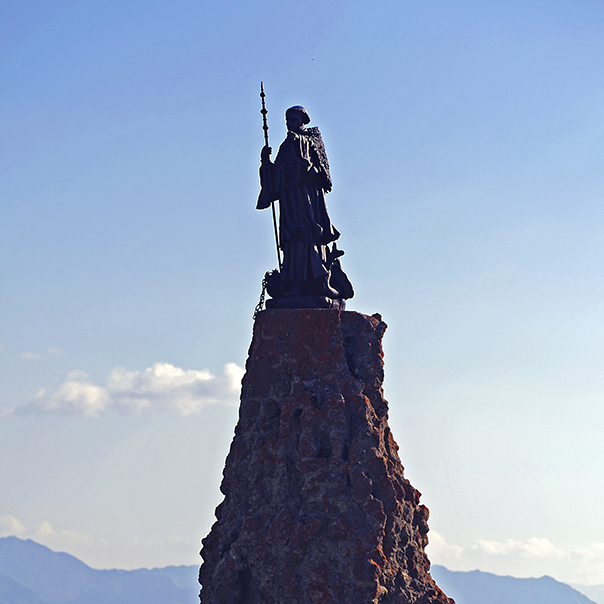
In 1902, at the instigation of Reverend Chanoux, a statue of St Bernard was inaugurated under the hospice, on a tuff pedestal 12.5 m high. height surmounted by a 4m50 figure covered in bronze. Pointing his index finger towards Italy, St Bernard made a gesture of welcome and seemed to indicate the obligatory passage to cross the pass. An Italian shrapnel having amputated his index finger during the fighting in 1940, he has since taken on a vengeful air by now pointing his fist towards Italy.
The Colonne Joux
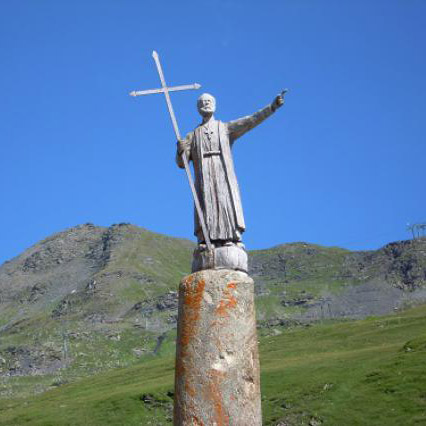
Porphyry column built in Roman times, surmounted by a magnificent ruby representing the eye of Jupiter and called carbuncle, symbolizing the eye of Jupiter. According to legend, St Bernard himself would have demolished the carbuncle to remove this symbol of paganism. Abée Chanoux sculpted a statue in larch representing the saint, which he sealed on the Joux Column in place of an iron cross. This statue was recently replaced.
The Mansio
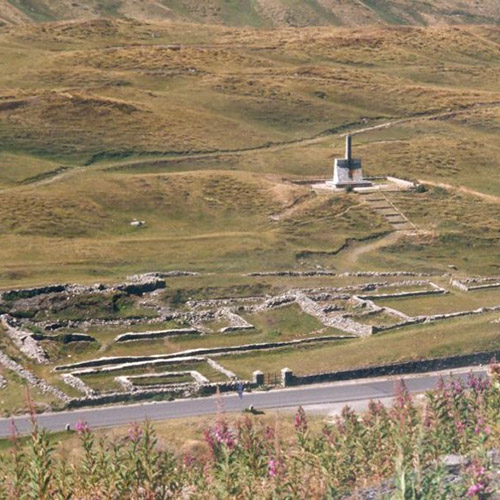
The mansio was built just after the Roman road. It is located to the south of the latter, on Italian territory. The ruins have an area of 25.5m by 67.5m. It is the ancestor of the hospice, it welcomed travellers and their mounts.
The temple

400 m from the mansio, on the French side, are the ruins of a supposed temple discovered in the 1930s. A large number of coins have been found there and especially a silver bust of Jupiter as well as a medallion of Hercules.
The 4 winds
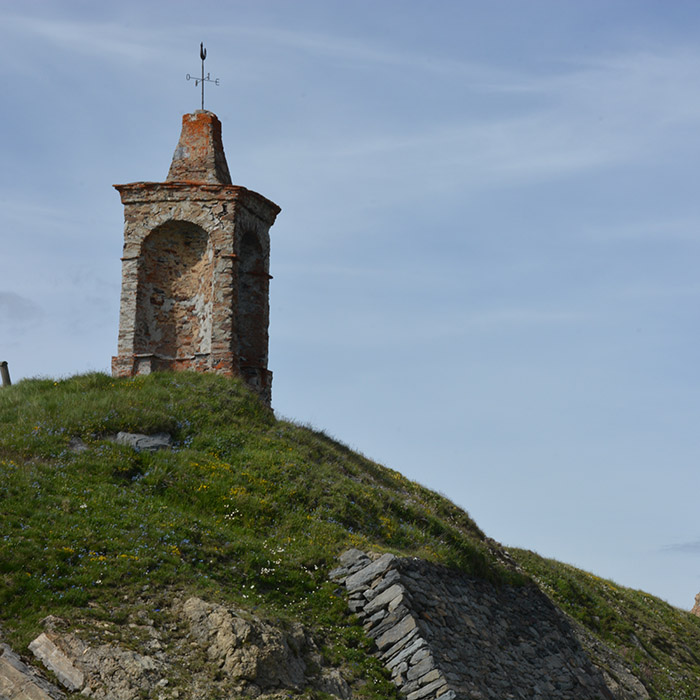
Below the hospice on the French side, there is a curious stone sentry box flanked by 4 niches, one on each of its sides. It was built by Father Chanoux to allow him to meditate in the shelter, whatever the direction of the wind. It was later used by customs officers who posted themselves there to spot smugglers.
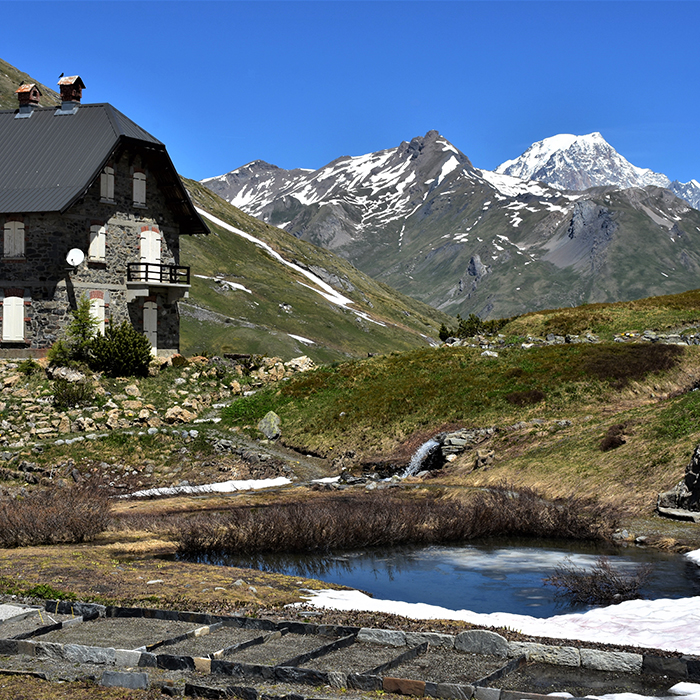
The alpine garden of La Chanousia
Located near the hospice, it was founded in 1897 by Abbé Chanoux, rector of the hospice. Passionate about botany, he designed this garden as a place of conservation of plants threatened with extinction and collection of rare alpine plants, but also as a place of experimental research on the relationship between plants and their environment. On 1 hectare of Italian territory, plants from the subalpine, alpine and nival levels are then preserved. The garden gained international fame in the 1920s; it then presents about 5000 species of plants (500 local species, 1000 species of Italian origin and 3500 species from different continents). Destroyed during the Second World War, it found itself in French territory in 1947. The site was restored in 1976 by an association governed by international law, Chanousia. The garden and its museum present today more than 1000 species reconstituted in their different environments.
It is open to the public from 9 a.m. to 6 p.m. from early July to mid-September.
More info: www.chanousia.org.
The ruined redoubt
The fort of the ruined Redoute is an advanced work of military surveillance strategically placed on a rocky ridge which dominates the Petit St Bernard pass at an altitude of 2400m. The current fort is built on the ruins of an old Sardinian redoubt, destroyed during the French Revolution, hence its name Ruined Redoubt. When it was built in 1891, the redoubt was occupied only during the summer period, but it would then be occupied throughout the year. Its position was an ideal training place in the difficult mountain conditions.
It was with the Second World War that the redoubt experienced its great military hours. In June 40, the redoubt was heroically defended by the 70th BAF, commanded by Lieutenant Desserteaux. It was then occupied by Italian and then German troops and was liberated after fierce fighting in April 45.
